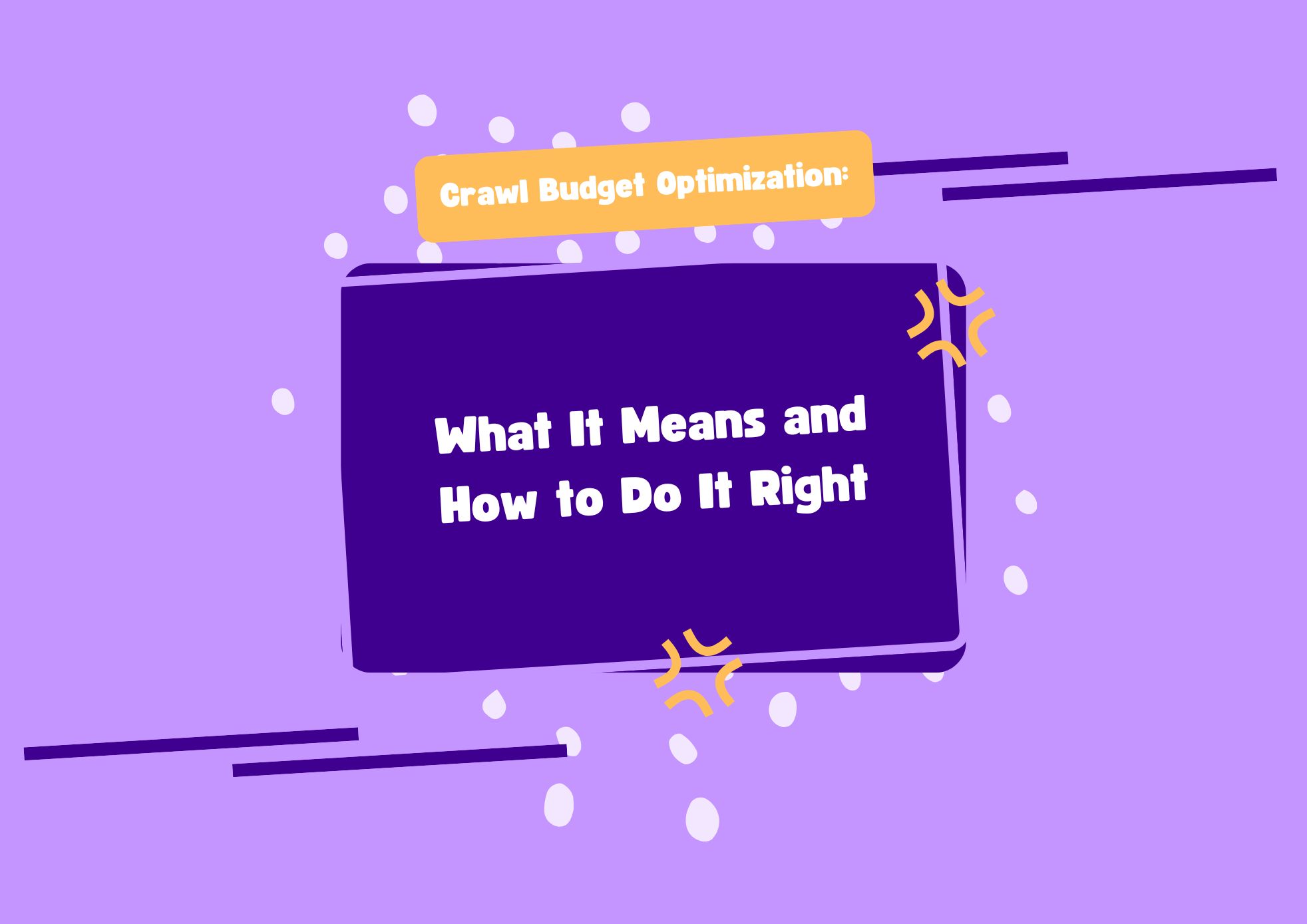Crawl budget is a critical yet often overlooked part of technical SEO. It refers to the number of pages Googlebot is willing and able to crawl on your website within a given timeframe. While crawl budget is not an issue for small sites, it becomes highly relevant for medium to large websites or those with frequent content changes.
This blog explains what crawl budget is, how it affects SEO, and how to optimize it using methods recommended by Google.
What Is Crawl Budget
Crawl budget is a combination of two key concepts:
- Crawl Rate Limit: The maximum number of simultaneous connections Googlebot can use to crawl your site without overwhelming your server. This limit is automatically adjusted based on your server’s response time and error rate.
- Crawl Demand: How much Google wants to crawl your site. This is determined by the popularity of your pages, how frequently your content changes, and how often users access them.
Crawl budget = Crawl rate limit × Crawl demand
Optimizing crawl budget ensures that search engine bots prioritize your important and updated pages instead of wasting resources on low-value or duplicate content.
Why Crawl Budget Matters
1. Faster Indexing of Key Pages
If your crawl budget is being spent on unnecessary URLs, it may delay the indexing of important new or updated content.
2. Improved Server Performance
Uncontrolled crawling can slow down your website or trigger server errors. By optimizing crawl budget, you reduce server load and improve site stability.
3. Better SEO Efficiency
A well-managed crawl budget helps ensure that Googlebot discovers, crawls, and indexes the most relevant parts of your site, leading to better visibility in search results.
How to Check Crawl Budget Usage
Google does not provide a crawl budget report directly, but you can analyze crawl activity using:
1. Google Search Console
Go to the Settings section and view the Crawl Stats Report. This shows the total number of crawl requests, average response time, and crawl status trends.
2. Server Log Files
Analyzing server logs helps you see which pages are being crawled, how often, and by which user agents. This provides more detailed insights than Search Console.
3. Third-Party SEO Tools
Tools like Screaming Frog, Ahrefs, or Semrush can help you simulate crawl behavior and identify inefficiencies in your URL structure.
Best Practices for Crawl Budget Optimization
1. Eliminate Duplicate Content
Use canonical tags properly to consolidate duplicate or similar pages. This prevents Googlebot from wasting crawl resources on redundant content.
2. Fix Broken Links and Redirect Chains
Broken links and long redirect paths waste crawl budget. Use 301 redirects correctly and remove unnecessary hops.
3. Optimize Internal Linking
Make sure important pages are well-linked internally. Flat site architecture and contextual linking help bots discover key pages faster.
4. Block Low-Value Pages
Use robots.txt to disallow crawling of non-essential sections like admin pages, filters, login pages, and archive tags.
5. Reduce URL Parameters
Parameterized URLs, especially in e-commerce sites, can create thousands of crawlable variations. Use Google Search Console’s URL Parameters Tool or consolidate them with canonical URLs.
6. Submit Sitemaps
Submit XML sitemaps through Google Search Console to guide bots directly to important content.
7. Keep Your Site Fast and Error-Free
Page speed and server reliability influence crawl rate. Optimize images, minify scripts, and reduce server response time.
8. Prioritize Fresh and High-Quality Content
Regularly updated, authoritative pages have higher crawl demand. Keep your content fresh and useful to encourage frequent crawling.
Crawl budget optimization is not about increasing the number of pages crawled. It’s about making sure that Google spends its time crawling the right pages. Especially for large websites, managing crawl budget can directly impact indexing speed, visibility, and overall SEO performance.
Focus on quality content, clean architecture, and efficient URL management to make the most of your available crawl budget.



